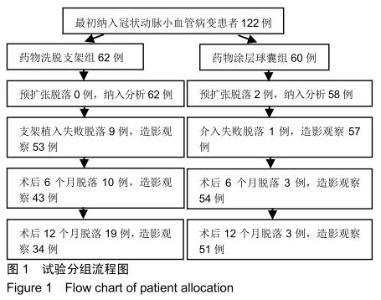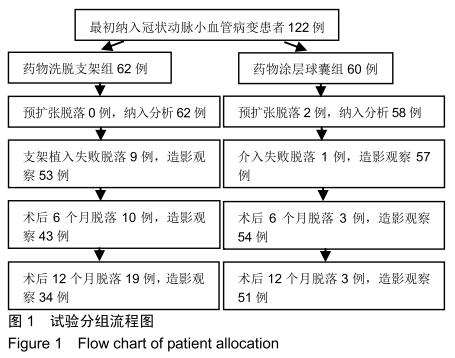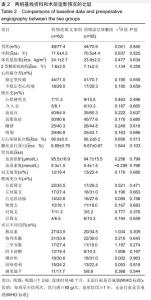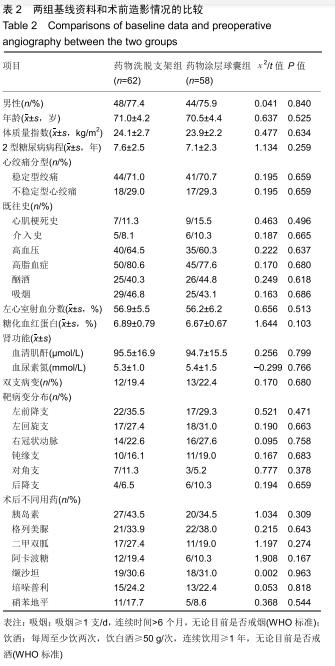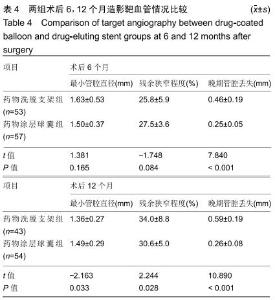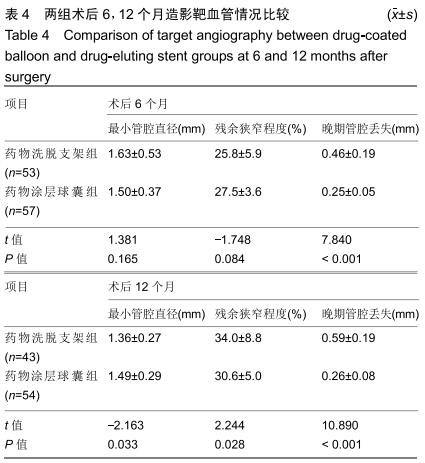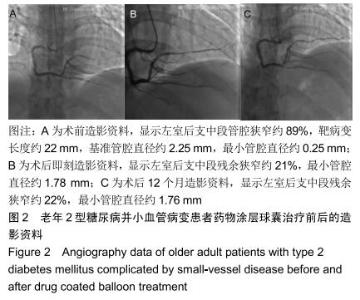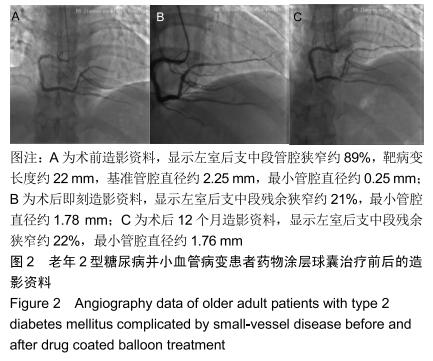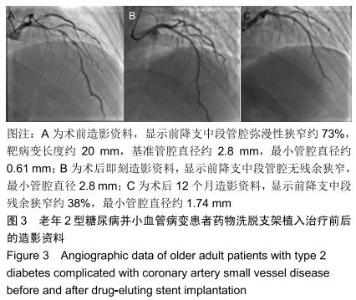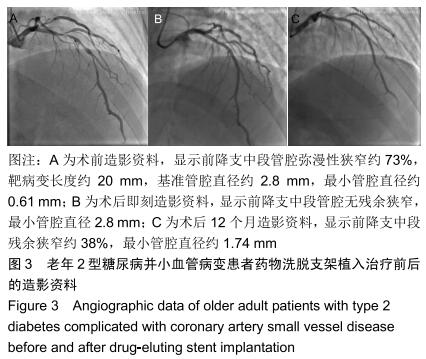|
[1] 翟东东,高炬,张萌,等.药物涂层球囊在冠状动脉小血管病变中的应用观察[J].中国循证心血管医学杂志,2019,11(4):477-479.
[2] TURIN TC, OKAMURA T, RUMANA N, et al. Diabetes and lifetime risk of coronary heart disease.Prim Care Diabetes. 2017;11(5):461-466.
[3] 林立龙,马煜盛,林子祥,等.高密度脂蛋白颗粒、C反应蛋白在冠心病合并2型糖尿病人群中的临床意义[J].实用医学杂志,2019,35(12):1920-1925.
[4] VOS NS, FAGEL ND, AMOROSO G, et al. Paclitaxel-Coated Balloon Angioplasty Versus Drug-Eluting Stent in Acute Myocardial Infarction: The REVELATION Randomized Trial.JACC Cardiovasc Interv. 2019; 12(17):1691-1699.
[5] 谢江波,陈晖,温燕华,等.药物涂层球囊在冠状动脉小血管病变中的疗效[J].实用医学杂志,2019,35(7):1092-1095.
[6] 中华医学会糖尿病分会.中国2型糖尿病防治指南(2013年版)[J].中国糖尿病杂志,2014,22(8):2-42.
[7] 柯元南,陈纪林.不稳定性心绞痛和非ST段抬高心肌梗死诊断与治疗指南[J].中华心血管病杂志,2007,35(4):295-304.
[8] 薛宪骏,钱钧,刘文武,等.药物涂层球囊对冠状动脉小血管原发病变的疗效[J].国际心血管病杂志,2018,45(4):245-247.
[9] CASSESE S, XU B, HABARA S, et al. Incidence and predictors of reCurrent restenosis after drug-coated balloon Angioplasty for Restenosis of a drUg-eluting Stent: The ICARUS Cooperation.Rev Esp Cardiol (Engl Ed).2018;71(08):620-627.
[10] SAKAMOTO Y, YAMAWAKI M, ARAKI M, et al. Comparison of 12-month angiographic outcomes between repeat drug-eluting stent implantation and drug-coated balloon treatment for restenotic lesion caused by stent fracture.Heart Vessels.2019;34(10):1589-1594.
[11] CORTESE B, D'ASCENZO F, FETIVEAU R, et a1. Treatment of coronary artery disease with a new-generation drug-coated balloon: final results of the Italian Elutax SV rEgistry-DCB-RISE.J Cardiovasc Med(Hagerstown).2018;19(5):247-252.
[12] JEGER RV, FARAH A, OHLOW MA, et al. Drug-coated balloons for small coronary artery disease (BASKET-SMALL 2) :an open-label randomised non-inferiority trial.Lancet.2018;392 (10150):849-856.
[13] TANG Y, QIAO S, SU X, et al. Drug-C oated Balloon Versus Drug-Eluting Stent for Small-Vessel Disease:The RESTORE SVD China Randomized Trial.JACC Cardiovasc Interv. 2018;11(23): 2381-2392.
[14] 曾紫微,周竹花,刘继文,等.2型糖尿病与冠脉支架术后再狭窄的相关性研究[J].现代诊断与治疗,2016,27(23):4536-4538.
[15] GODOY LC, RAO V, FARKOUH ME. Diabetes and multivessel disease: coronary artery bypass grafting remains king.Curr Opin Cardiol.2018;33(5):551-557.
[16] HU L, DAI SC, LUAN X, et al. Dysfunction and Therapeutic Potential of Endothelial Progenitor Cells in Diabetes Mellitus.J Clin Med Res. 2018; 10(10):752-757.
[17] GIUSTINO G, MEHRAN R, SERRUYS PW, et al. Left Main Revascularization With PCI or CABG in Patients With Chronic Kidney Disease:EXCEL Trial.J Am Coll Cardiol.2018;72(7):754-765.
[18] FALLATAH R, ELASFAR A, AMOUDI O, et al. Endovascular repair of severe aortic coarctation,transcatheter aortic valve replacement for severe aortic stenosis,and percutaneous coronary intervention in an elderly patient with long term follow-up.J Saudi Heart Assoc. 2018; 30(3):271-275.
[19] KUMAR A, SHARIFF M. Trial sequential analysis of studies comparing the frequency of target-vessel revascularization with drug-coated balloons as compared with second-generation drug-eluting stents in coronary in-stent restenosis: Have we generated enough evidence in the field? Indian Heart J.2019;71(3):288-290.
[20] ABELLAS-SEQUEIROS RA, BENEZET J, AGARRADO LUNA A, et al. Percutaneous coronary intervention for treating de-novo lesions in small coronary vessels: initial experience with the Essential paclitaxel-coated balloon.Coron Artery Dis.2018;29(06): 477-481.
[21] 杨淦,卜军,何奔.药物涂层球囊在冠状动脉小血管病变中的应用[J].上海交通大学学报(医学版),2018,38(6):695-698.
[22] YU X, JI F, XU F, et al. Treatment of large de novo coronary lesions with paclitaxel-coated balloon only: results from a Chinese institute. Clin Res Cardiol.2019;108(3):234-243.
[23] RONCALLI J, GODIN M, BOUGHALEM K, et al. Paclitaxel Drug-Coated Balloon After Bare-Metal Stent Implantation, an Alternative Treatment to Drug-Eluting Stent in High Bleeding Risk Patients (The Panelux Trial).J Invasive Cardiol.2019;31(4):94-100.
[24] SCHNEIDER PA, LAIRD JR, DOROS G, et al. Mortality Not Correlated With Paclitaxel Exposure: An Independent Patient-Level Meta-Analysis of a Drug-Coated Balloon.J Am Coll Cardiol. 2019;73(20):2550-2563.
[25] NEUMANN FJ, SOUSA-UVA M, AHLSSON A, et al. 2018 ESC/EACTS guidelines on myocardial revascularization:the task force on myocardial revascularization of the European Society of Cardiology (ESC) and European Association for Cardio-Thoracic Surgery (EACTS). Developed with the special contribution of the European Association for Percutaneous Cardiovascular Interventions (EAPCI). Eur Heart J.2019;40(2):87-165.
[26] 陈韵岱,王建安,刘斌,等.药物涂层球囊临床应用中国专家共识[J].中国介入心脏病学杂志,2016,24(2):61-67.
|
